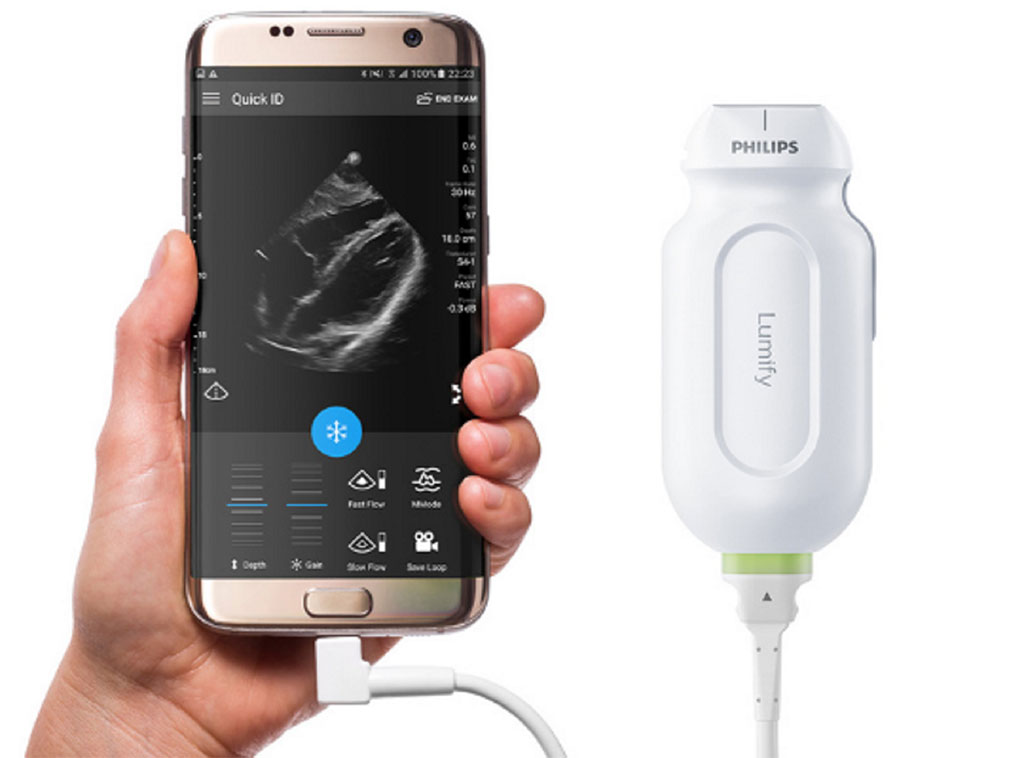Philips Expands Access to Hemodynamics at POC for Real-Time Blood Flow Assessment on Lumify Handheld Ultrasound
Posted on 11 Feb 2022
Royal Philips (Amsterdam, the Netherlands) has expanded its ultrasound portfolio with advanced hemodynamic assessment and measurement capabilities on its handheld point-of-care ultrasound – Lumify.
With the addition of Pulse Wave Doppler, Philips has greatly expanded the utility of its Handheld Ultrasound – Lumify – enabling clinicians to quantify blood flow in a wide range of point-of-care diagnostic applications – including cardiology, vascular, abdominal, urology, obstetrics and gynecology. Also new to Lumify are obstetric measurements to help in early assessment of gestational age and the identification of high-risk pregnancies.

Pulse Wave Doppler ultrasound provides clinicians with more information, in addition to 2D and color imaging, to assess hemodynamic patterns to differentiate between arterial and venous blood flow and quantify hemodynamic function. The resulting hemodynamic measurements can enhance diagnostic confidence and timely clinical decision-making in virtually any care setting, including cardiology and emergency medicine. With these latest features, Philips’ easy-to-use fully integrated handheld ultrasound system – Lumify – brings together imaging tools across ultrasound platforms, leveraging the company’s expertise in cardiology and radiology. The Lumify system also provides clinicians with advanced analysis software and reporting tools, and access to tele-ultrasound capabilities (Lumify with Collaboration Live powered by Reacts) for live communication support to connect clinicians around the globe for real-time collaboration.
In addition to adding Pulse Wave Doppler for hemodynamics, Philips is the first and only point-of-care ultrasound solution with B-lines (B-line quantification tool for ultrasound lung imaging) software and intelligent algorithms to enhance heart and lung assessments, which is critical when dealing with severe COVID cases. The pandemic has shown the relevance of lung ultrasound in the diagnosis and treatment of pneumonia, one of the most common complications of COVID-19. AI-enhanced automated algorithms looking for B-lines in lung fluid can help provide more objective data and interpretation.
“By applying Philips’ expertise in cardiovascular care, imaging and patient monitoring to Philips Handheld Ultrasound – Lumify – we are committed to deliver a dedicated, innovative point-of-care portfolio, enabling clinicians to quickly assess hemodynamics – including cardiovascular function, organ perfusion and fetal assessment – in a daily routine, to identify abnormalities and intervene quickly,” said Matthijs Groot Wassink, General Manager of Point of Care Ultrasound at Philips. “With the addition of Pulse Wave Doppler and enhanced obstetrics measurements, we have increased the number of markers on which diagnoses can be made, to deliver high quality imaging and enhance the evaluation and effectiveness of treatment in real-time.”
Related Links:
Royal Philips














